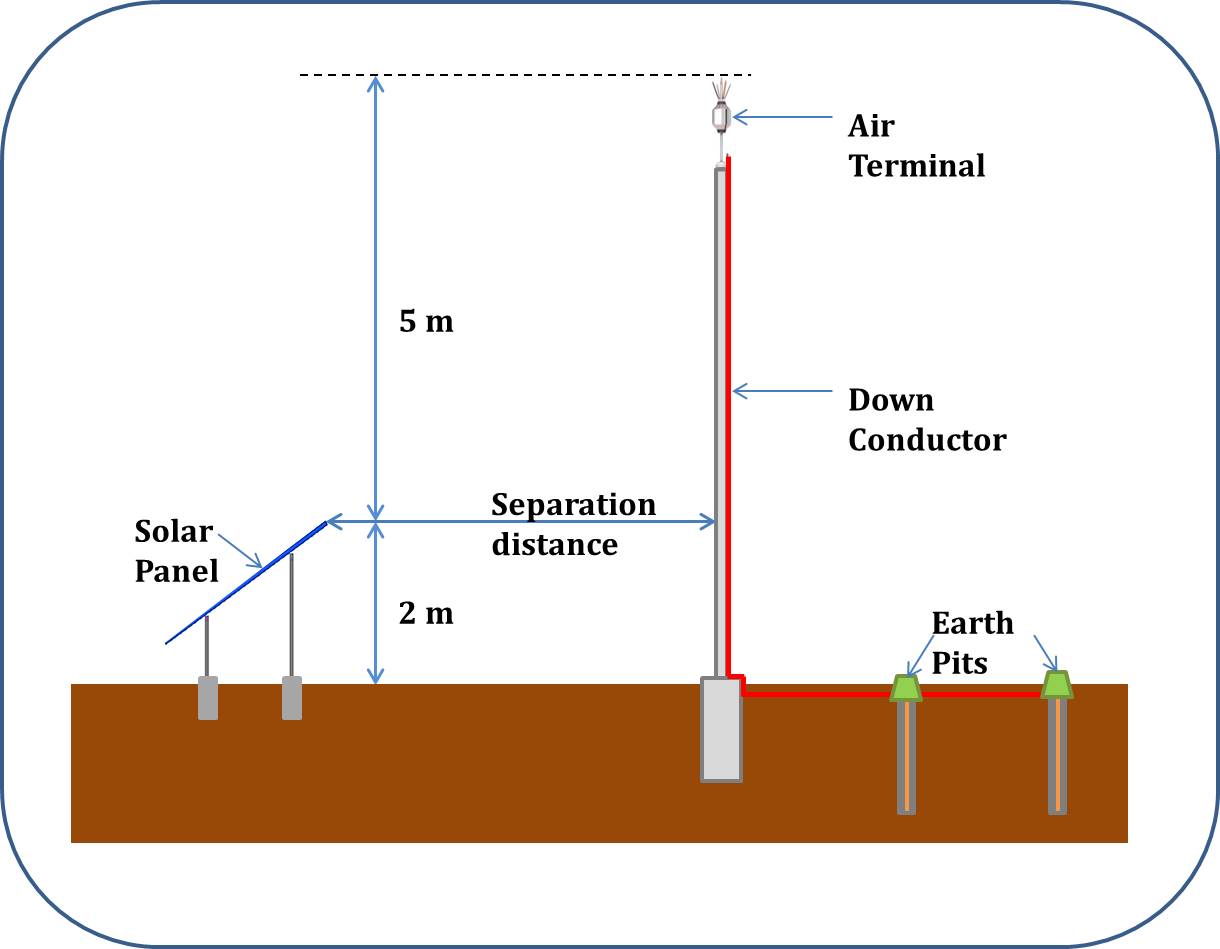
Lightning is one of the most destructive phenomena of nature. It can cause damage to humans, structures, electrical and electronics equipment. Currently, due to global warming, the entire world is moving towards Renewable Energy, and Solar Panels are at high risk due to the possibility of destruction by lightning strikes due to its elevation and the widespread vacant land areas chosen for the installation of such structures. Redesigning or modification of Lightning Protection System post the installation of these structures isn’t advisable as it would attract heavy expenses and hence a properly designed LPS as per relevant standards is mandated.
Lightning could strike and cause damage to the solar panels either directly or indirectly. External protection of solar panels against direct lightning strikes needs an air terminal to intercept the lightning strike, a down conductor to provide a dedicated path, and an efficient earthing system to dissipate the lightning current into the earth.
Internal protection of solar panels needs an appropriate surge protection device to protect these solar panels from getting damaged from a surge current caused due to lightning strikes.

In a non-isolated Lightning protection System, the air terminal is mounted on the panel itself. The number of air terminals to be installed to protect a panel depends on the dimensions of such solar panels.
The air terminal height (h) should not exceed 0.5m to prevent the shadow of the Air terminal from falling on the panels, which could hamper the performance of these solar panels. Positioning of these air terminals shall be derived by either adapting to the protection angle method or the rolling sphere method as per IEC 62305. The down conductor should be a minimum of two runs from the air terminal and shall be connected to a minimum of two earth electrodes per down conductor.

In isolated lightning protection, the air terminal is mounted on a mast of a certain height to provide appropriate elevation as per the design and is placed away from the solar panel/panels to be protected. This separation distance between the solar panel and the Lightning Protection System shall be calculated as per relevant standards.
As the influence of the shadow of the Lightning arrestor arrangement on the solar panel could hamper the performance of the entire solar system, a safe separation distance between the LA arrangement and the solar panel should be maintained. The separation distance can be calculated based on the following parameters.
Again as in the Non Isolated LPS, the down conductor should be a minimum of two runs from the air terminal and shall be connected to a minimum of two earth electrodes per down conductor.
Nowadays more such solar farms are being protected by the Early Streamer Emission technology-based Lightning Protection System as per the French NFC 17-102 2011 or Spain’s UNE21186 standard for Protection against lightning strikes. Due to its larger protection area as per its working principle, the number of ESE type Lightning Protection Systems is considerably very less when compared to conventional type Lightning Protection Systems, thus being the most preferred technology for Lightning Protection for most of the companies in India and in many other countries involved in the Solar Power Generation. ESE type Lightning Protection Systems are isolated and installed away from these panels to be protected which avoids shadow issues on solar panels.